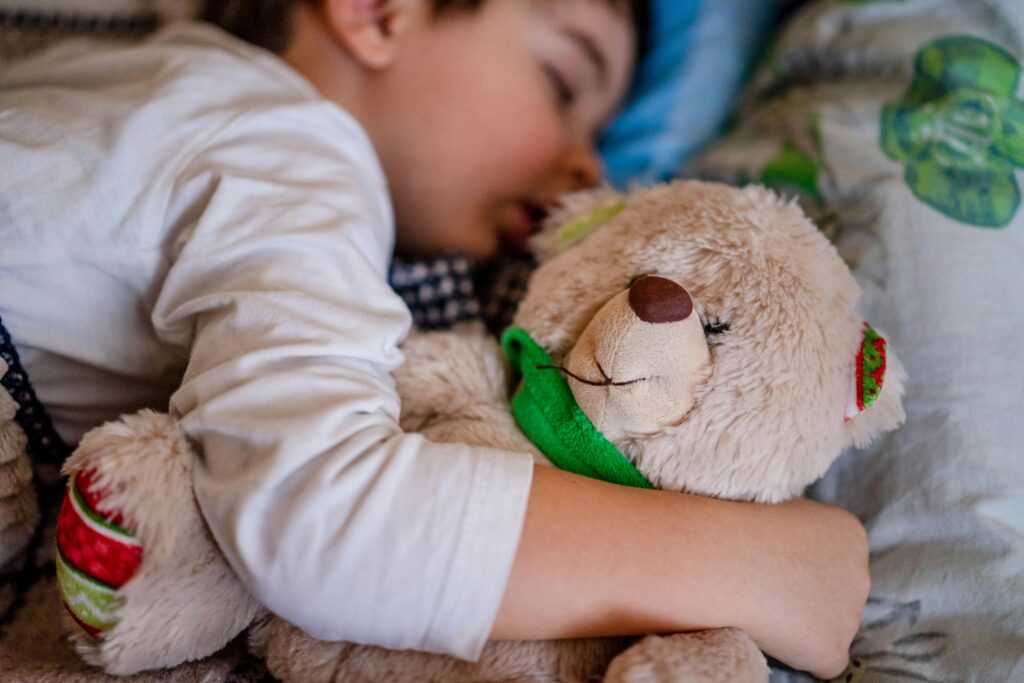Creating a calm bedtime routine for my child has been one of the most rewarding and transformative parts of our parenting journey. As a mother, I’ve learned that how we end our day matters just as much as how we begin it. There was a time when bedtime in our home felt like a battleground—complete with whining, bargaining, and emotional exhaustion. But over time, with patience and love, I developed a soothing and structured routine that works wonders for both my child and me.
This post walks you through everything I did to create a peaceful bedtime experience that supports better sleep, emotional connection, and overall family harmony.

Observing My Child’s Natural Sleep Patterns
Before creating any structured routine, I took a step back to simply observe. Every child has a natural rhythm, and tuning into it can make the process smoother.
I started to notice when my child naturally became tired: there were signs like rubbing his eyes, becoming unusually quiet, or getting clingy. What I discovered is that pushing past these signals led to overtiredness—and ironically, more resistance to sleep. Once I identified his sleepy window, I adjusted bedtime to match that natural rhythm.
Parenting Tip: Keep a small sleep diary for a week. Note the time your child seems tired, the time you start bedtime, and how long it takes them to fall asleep. Patterns will begin to emerge that can guide you.
Establishing a Consistent Sleep Schedule
Once I had a better idea of my child’s natural sleep rhythm, I set a fixed bedtime and wake-up time. One of the most powerful things I did was keep these times consistent every day—including weekends. It helped regulate his internal clock, so he began feeling sleepy at the same time every evening.
Our schedule looked like this:
- Dinner: 7:00 PM
- Bath time: 7:30 PM
- Bedtime routine: Starts at 8:00 PM
- Lights out: By 8:30 PM
Consistency turned bedtime into a predictable event. The more we stuck to the same timeline, the less resistance I faced.

Designing a Predictable, Soothing Wind-Down Routine
Children feel secure with structure and repetition. I created a step-by-step routine that my child could anticipate and enjoy. Rather than viewing bedtime as an abrupt end to the day, I reframed it as a gentle, loving transition.
Our 5-Step Bedtime Routine
- Warm Bath: The warm water soothes his muscles and helps signal to his brain that it’s time to slow down.
- Pajamas and Brushing Teeth: These small rituals build personal responsibility and hygiene.
- Cuddle Time: We snuggle in bed and talk about his day. I ask simple questions like, “What made you happy today?” or “What was something new you learned?”
- Story Time: I read a picture book or tell a story from my own childhood.
- White Noise or Soft Music: A calming sound helps block out distractions and lull him to sleep.
Creating a Sleep-Friendly Environment
The bedroom plays a crucial role in bedtime success. I focused on turning the space into a calm, clutter-free zone designed for rest.
Key changes I made:
- Soft, dim lighting: I added a warm night light instead of harsh ceiling lights.
- Comfortable bedding: I selected soft, breathable sheets and age-appropriate blankets.
- Minimal distractions: No toys in bed and no bright or busy decorations near the sleeping area.
- Cool, quiet room: A slightly cool room temperature and a white noise machine made a big difference.

Making Transitions Smooth and Gentle
One of the biggest mistakes I used to make was transitioning too quickly. Children need time to shift from one activity to another.
Instead of abruptly saying, “It’s bedtime now,” I started giving verbal cues:
- “10 more minutes of play, then it’s time to get ready for bed.”
- “After we clean up, it’s bath time.”
These reminders gave him time to mentally prepare and reduced bedtime resistance.
Leading with Calm, Not Frustration
There were nights when I felt exhausted and impatient. But I quickly learned that my emotional state deeply affected my child’s.
Children are incredibly intuitive. If I approached bedtime with tension, he mirrored that stress. So I made a commitment to remain calm, speak softly, and let go of minor frustrations. When I brought peace into the room, he responded with trust and cooperation.

Embracing Flexibility Without Losing Structure
Even the best routines need flexibility. Some nights he’s more tired than others. Occasionally we skip a story or shorten the cuddle time. And sometimes we talk longer because he wants to share something important.
I learned to read his emotional needs while sticking to the overall routine. The predictability is what matters—not perfection.
The Results: What Changed for Us
After sticking with this bedtime structure for a few weeks, the difference was clear:
- Bedtime became less stressful and more joyful.
- My child began falling asleep faster and sleeping more soundly.
- I had more time to unwind at night without feeling drained.
- Our connection deepened through nightly conversations.
Creating a calm bedtime routine didn’t just help my child sleep better—it helped me feel like a more peaceful, present parent.

Final Thoughts
Every family is different, but one thing is universal: children thrive with routine, love, and security. Bedtime can be a beautiful opportunity to bond, reflect, and rest. It just takes a little structure, a lot of patience, and a heart full of love.
Start small, adjust as needed, and give yourself grace along the way. You’re not just helping your child sleep better—you’re building a lifelong foundation of safety and trust.
Frequently Asked Questions (FAQ)
What’s the best age to start a bedtime routine?
You can begin a gentle routine as early as infancy. For toddlers and older children, a consistent bedtime routine becomes especially important.
How long should the bedtime routine be?
Aim for 30 to 45 minutes. This allows time to wind down without dragging it out to the point of distraction.
My child still resists bedtime. What should I do?
Stay consistent, but involve them in the process. Let them pick the story or choose between two pairs of pajamas. Empowering small choices helps.
Do I need to follow the same steps every single night?
A flexible structure works best. The steps should feel familiar, but don’t stress if you occasionally skip one. The emotional tone is more important than perfection.
What if bedtime feels stressful every night?
Give it time and evaluate each part of the routine. Often small tweaks—like moving bedtime earlier or adding a calm activity—can have big impacts. Remember, it’s a process.








